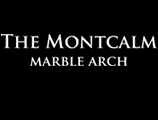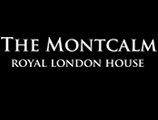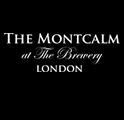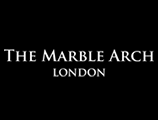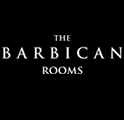In our previous blog, we took a look at what guests of the Montcalm London City At The Brewery Hotel could expect from the first 150 miles of the Thames Path. With the famous London river cutting through much of the Cotswolds and into London, it’s unsurprising that there are countless hidden gems along the home counties route. The river runs alongside historic villages, beautiful nature reserves and important English landmarks hidden in spring valleys and marshes.
But once you reach the outskirts of London, these landmarks rise in their number per mile. This is unsurprising really, London was built around the Thames, originally by the Romans for ease of trade from the English Channel and so it’s no surprise that over hundreds of years, many iconic buildings and areas arose. For guests at hotels near Moorgate, the Thames is just a short walk away, as is the famous path that was built from its source to its opening into a huge bay east of London.
This blog will outline some of the landmarks you’ll see when travelling along the Thames Path from west to east, and the stories they tell about the city through the ages. Whether you walk a mile or ten miles of these London routes, there’s plenty for guests of Chiswell Street Hotels to enjoy on the Thames Path.
Ham Lands
Spanning 72 hectares along the banks of the Thames in West London, Ham Lands consist of grasslands, fields and scrublands along the side of the Thames. This green and relaxing route into London is one of the best ways to enter the city via the Thames Footpath and has an historic context of being owned by the Earl Of Drysart until the 19th century, before the area became the site of grit excavation.
Eel Pie Island
Once the home of a ballroom hotel and gig venue up until the late 60s’, Eel Pie Island is located in the Twickenham area and spans almost 9 acres in the centre of the Thames. The history of jazz and blues on the island is celebrated in London and popular bands such as the Beatles, Black Sabbath and The Who played here in their early days. Now, the island has studios that are sometimes leased out to artists throughout the year.
Richmond Park
Richmond Park is one of the most famous parks in London and easily reachable within an hour from Chiswell Street Dining Room hotels via the district line. Richmond Park was once owned by Charles I as a deer hunting park, but now is open to the public along the banks of the Thames.
London Wetlands Centre
Unlike Richmond Park and the Ham Lands, the London Wetlands Centre requires tickets for entry but utilises its marshy Thameside expanse to cultivate natural habitats for many forms of birdlife. Whilst visiting, you will see many types of exotic bird here, not just those that migrate along the banks of the Thames.
Kew Gardens
A different mode of green space along the banks of the Western side of the Thames, Kew Gardens is another ticketed, historic green space that cultivates one of the most expansive collections of plants and literature on plants in the world. On the site of what was once Kew Palace (of which only the Dutch House survives), the 8.5 million fungal and plant specimens found throughout the series of greenhouses here makes for a tranquil and colourful deviation from the Thames Path.
Battersea Power Station
Battersea Power Station has changed dramatically over the last few years, and walking the Thames Path will bring you to this southwestern Thameside power station relic, now being developed into apartments and shopping centres, Battersea Power Station once produced energy for many parts of the city but was decommissioned in 1975. Visiting today will see you face to face with one of the most extensive London regeneration projects to date.
Houses Of Parliament
Passing through central London’s part of the Thames Path will of course take you straight past the famous Houses of Parliament. This beautiful gothic structure is the home of British politics today and is one of the most iconic buildings along the River Thames.
The South Bank
Once you’ve passed the Houses of Parliament and Big Ben, the south side of the river will pass through this central hub of arts and culture. Consisting of modern and brutalist designed performance and film venues, the South Bank boasts many restaurants, street performances and of course the iconic London Eye. Make sure to stop in at the National Theatre for some top tier drama and the BFI for absorbing film screenings.
London Docklands
Easy to reach for guests of East London’s Montcalm Hotel deals, the Docklands area of East London offers a wealth of historic architecture and ancient Thameside pubs like the Mayflower. This beautiful area, despite regeneration over the years, has retained its warehouse charm and river bank beaches. Try your hand at a spot of mudlarking for a truly London experience.
Cutty Sark
Moving into Southeast London’s Greenwich area, the riverside Cutty Sark sparkles majestically over the Thames. This reconstruction of an 19th century Merchant ship is part of the National Maritime Museum, exploring the history of English seafaring and that of the Thames. Take a walk around Greenwich Park for a stunning view over the London skyline, and step onto the Greenwich Meridian Line, another important innovation for maritime navigation.
O2 Arena
After leaving Greenwich, the next site of interest amidst the art installations and riverside pubs is the O2 Arena, created for celebration of the new Millennium. The O2 Arena now stands as a famous music venue, hosting some of the biggest international names in pop music on a weekly basis.
Thames Barrier
The end of the Thames Path is located at the Thames Barrier, a beautiful and important structure that helps to control the tides and flow of the river into Central London. The Thames Barrier is situated close to the Thames Barrier Park on one side and the Greenwich Peninsula reserve on the other, two idyllic spots of greenery amidst the skyscrapers and warehouses.























